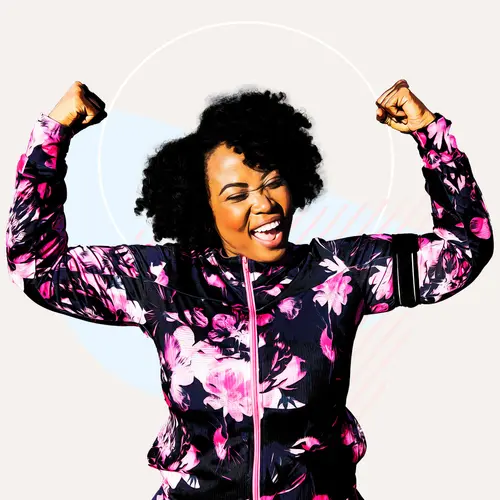Yoga is a mind and body activity that pushes you through a cycle of poses to improve your flexibility, strength, and balance. Yoga is a great way to get physical exercise in a low-impact way. This type of exercise is calming and is also beneficial for your heart health.
For instance, the bridge yoga pose has many benefits from relieving lower back pain to being a low-impact stretching pose for treatment of osteoporosis and PCOS.
What Is the Bridge Pose?
The bridge yoga pose, also known as setu bandha, is a backbend pose that’s meant to open your chest and stretch your thighs. In Sanskrit, setu means bridge, and bandha means lock.
The bridge is a beginner pose. The pose is typically done at the end of a yoga session, following a standing sequence to help warm up your spine.
The bridge yoga pose is considered one of the basic poses in the primary yoga series. This pose is one of two back-bending postures in a basic flow. The upward-facing dog is the other back-bending pose.
What Muscles Does Bridge Pose Work?
For the bridge pose, muscles used are primarily in your back. This pose helps strengthen your back muscles, glutes, and hamstrings. The bridge pose can also relieve tension and fatigue in your back.
While the pose strengthens your back, it also stretches your chest, neck, and spine. Arching your body upward then helps open your lungs and calm your brain. This essential yoga move benefits many parts of your body.
How to Do a Bridge Pose
To do the bridge yoga pose:
- Start by lying on your back.
- Place your feet flat on the floor, shoulder-width apart, and keep your knees bent.
- Put your hands down at your sides, palms down on the floor.
- Inhale and push your hips up towards the ceiling. Ensure your head, neck, and shoulders remain flat on the floor.
- While holding the pose, there are a few options for your hands. You can keep your palms flat on the ground. For more of a challenge, you can interlace your fingers and push your hands on the floor to lift your torso a little higher. Alternatively, you can put them on your back, pointing your fingers toward your lower back with your thumbs to the side.
- Breathe deeply, holding your position for a few moments. Then, move your arms back down to the floor, exhaling while you lower your hips back to the ground.
Bridge Pose Variations
The bridge yoga pose is a basic movement. However, the bridge pose variations can be modified to be more challenging or less strenuous.
Poses to help you prepare for the bridge pose include:
- Cobra pose
- Standing backward bend
- Cat- cow pose
Poses to follow up the bridge pose and get the most out of these movements include:
You can bring your arms under your back to increase the challenge by rolling your shoulders under. Then, bring your hands together and lift your torso higher or support your back with the palms of your hands.
The half-bridge pose is a modification of the full bridge yoga pose. This movement can help you strengthen your muscles and improve your balance. You’ll still get the stimulation and relief of the movement. This is the same movement as the bridge pose, but instead, you’ll use your hands to support your lower back, keeping your elbows on the ground. This pose is more supportive for your lower back.
Bridge Pose Yoga Benefits
There are so many benefits to practicing yoga. Better posture, improved balance, and coordination are some of the main benefits you’ll see. You’ll also experience a better range of motion, increased strength, and lower anxiety levels.
The bridge pose yoga benefits in particular include heart health and emotional benefits. Practicing yoga is all about having a positive, healthy mindset.
Children. Yoga has many benefits for children. This activity helps improve children’s concentration, comprehension, and memory. Yoga can also help children prepare to learn in school. This mindful activity gives children the space to reflect and understand emotional learning. The bridge pose is an easy movement for children to practice at home or in an exercise environment.
Osteoporosis. The bridge pose can help improve your posture, reducing pain caused by osteoporosis. Improved strength and balance also help reduce your risk of falling, which is the leading cause of osteoporotic fractures.
Lower back pain. The bridge pose is great for relieving lower back tension. You can also modify this pose to any movement that accommodates your current spine needs.
PCOS. The bridge pose is also good for PCOS pain. The flow can help relieve lower back pain, sciatica, and stiffness in your back, thighs, hips, and ankles. Holding this pose for a few beats and repeating it eight to 10 times can help during menstruation and pregnancy.
Hip flexibility. Yoga has been shown to improve flexibility in the major muscle groups surrounding your hip. The muscles you’re strengthening with this pose include your ab muscles, back, and quadriceps. These muscles help preserve your hip’s range of motion, making it easier to do activities like walking, standing, and climbing stairs.
What to Avoid When Doing the Bridge Yoga Pose
While the bridge yoga pose is a relatively simple and easy pose, there are reasons you should not include this in your yoga flow. If you're dealing with any type of neck or back injury, you should avoid bending your body into a bridge. This pose's movement will strain your neck and back and could cause more damage or keep your injuries from healing. Avoid any yoga poses that strain these areas until you're fully healed and cleared by your doctor or physical therapist. Replace them with restorative yoga instead.
Otherwise, this pose has many benefits and is an essential basic yoga pose that should be included in your routine.

